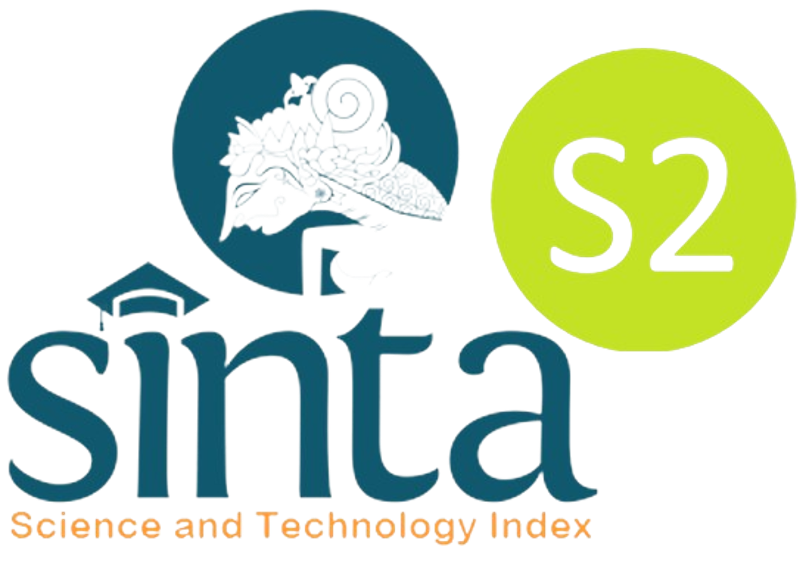Evaluating the Numeracy Cognitive Level of Indonesian Elementary School Students using the Minimum Competency Assessment
Abstract
Abstract This study aims to describe the achievement of the numeracy cognitive level of elementary school students on a minimum competency assessment. The population of this study were fifth grade students at C-accredited elementary school in Lampung province. The sample of this study selected using stratified random sampling. Data were collected using a level 2 numeracy test instrument developed by the Center for Evaluation and Learning of the Ministry of Education and Culture of the Republic of Indonesia. Data were analyzed descriptively and inferentially using the Mann-Whitney test. It was concluded that: a) students’ category of numeracy ability was “competent” (mean score 43.04); b) there is no significant difference between the numeracy abilities of male and female students; c) the highest percentage of correct answers was matching type questions (62.9 percent) and d) the lowest cognitive level was achieved is in the measurement concept which was only 28.6.
Keywords elementary school students, minimum competency assessment, numeracy cognitive level.
Abstrak Penelitian ini bertujuan untuk mendeskripsikan pencapaian level kognitif numerasi siswa sekolah dasar pada asessmen kompetensi minimum. Populasi penelitian ini adalah siswa kelas V sekolah dasar dengan akreditasi C di provinsi Lampung. Sampel penelitian dipilih dengan teknik stratified random sampling. Data kemampuan numerasi siswa dikumpulkan dengan menggunakan instrumen tes numerasi level 2 yang dikembangkan oleh pusat evaluasi dan pembelajaran Kementerian Pendidikan dan Kebudayaan Republik Indonesia. Data dianalisis secara deskriptif dan inferensial dengan menggunakan uji Mann-Whitney. Berdasarkan hasil penelitian disimpulkan bahwa: a) kemampuan numerasi siswa berada pada kategori “cakap” (rata-rata 43,04) b) tidak terdapat perbedaan yang signifikan antara kemampuan numerasi siswa laki-laki dan perempuan; c) bentuk soal menjodohkan merupakan bentuk soal dengan persentase jawaban benar tertinggi (62,9 persen); dan d) level kognitif terendah dicapai pada konsep pengukuran yaitu hanya sebesar 28,6. Kata kunci: asesmen kompetensi minimum, level kognitif numerasi, siswa sekolah dasar.
Full Text:
PDFReferences
Abduh, M. 2019. Rintisan Pelatihan Dasar Pembelajaran Literasi dan Kepemimpinan untuk Pembelajaran di NTT. Asesmen Volume 16 No 1 pp 3-14
Ekowati, D. W., Astuti, Y. P., Utami, I. W. P., Mukhlishina, I., & Suwandayani, B. I. (2019). Literasi Numerasi di SD Muhammadiyah. ELSE (Elementary School Education Journal) : Jurnal Pendidikan Dan Pembelajaran Sekolah Dasar, 3(1), 93. https://doi.org/10.30651/else.v3i1.2541
Goodman, M., et all. 2013. Literacy, Numeracy, and Problem Solving in Technology- Rich Environments Among U.S. Adults: Results from the Program for the International Assessment of Adult Competencies 2012 First Look. NCES:
U.S. DEPARTMENT OF EDUCATION
Kemendikbud. 2022. Buku Saku Merdeka Belajar ke-19: Rapor Pendidikan Indonesia untuk Satuan Pendidikan. pusmejar.kemendikbud.go.id
Mahmud, M. R., & Pratiwi, I. M. (2019). Literasi Numerasi Siswa Dalam Pemecahan Masalah Tidak Terstruktur. KALAMATIKA Jurnal Pendidikan Matematika, 4(1), 69–88. https://doi.org/10.22236/kalamatika.vol4no1.2019pp69-88
Nelson, G., & McMaster, K. L. (2019). The effects of early numeracy interventions for students in preschool and early elementary: A meta-analysis. Journal of Educational Psychology, 111(6), 1001–1022. https://doi.org/10.1037/edu0000334
Perdana, R & Suswandari, M. 2021. Literasi Numerasi dalam Pembelajaran Tematik Siswa Kelas Atas Sekolah Dasar. Absis: Mathematics Education Journal Vol. 3., No. 1, Mei 2021, pp. 9-15. ISSN 2686-0104 (print), 2686-0090 (online) http://journal.univetbantara.ac.id/index.php/absis/index
Pusmenjar. 2020. Modul Asesmen Awal Matematika SD/MI Kelas 4. Badan Penelitian dan Pengembangan dan Perbukuan: Kementerian Pendidikan dan Kebudayaan.
Yustitia, V., Siswono, T Y E., Abadi. 2021 Numeracy of prospective elementary school teachers: a case study. J. Phys.: Conf. Ser. 1918 042077 pp 1-4.
Refbacks
- There are currently no refbacks.
Copyright (c) 2022 Jurnal Pendidikan MIPA

This work is licensed under a Creative Commons Attribution-ShareAlike 4.0 International License.

The copyright is reserved to The Jurnal Pendidikan MIPA that is licensed under a Creative Commons Attribution-ShareAlike 4.0 International License.

